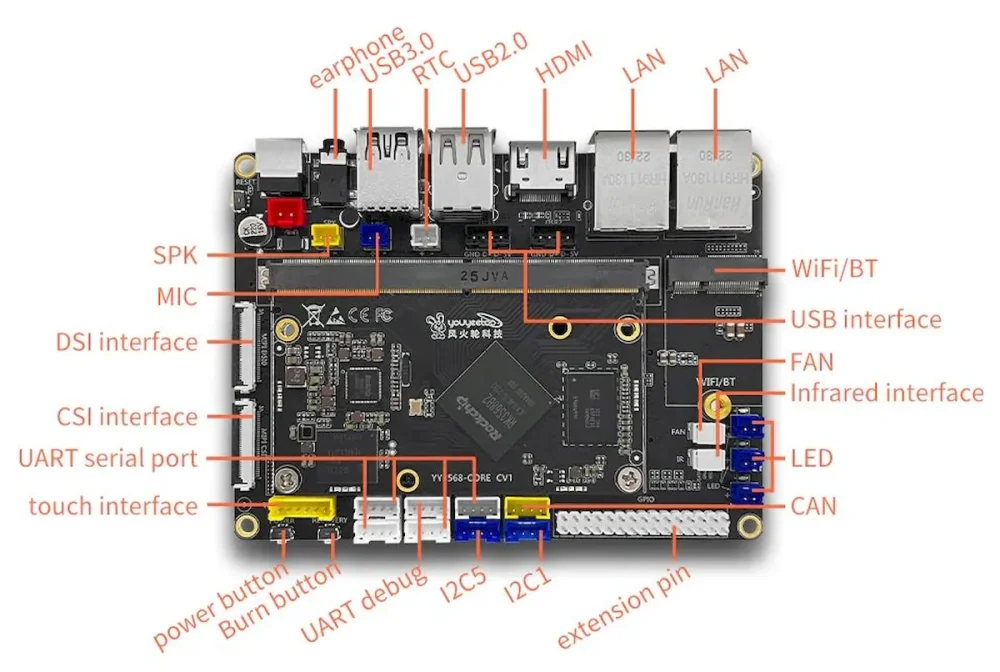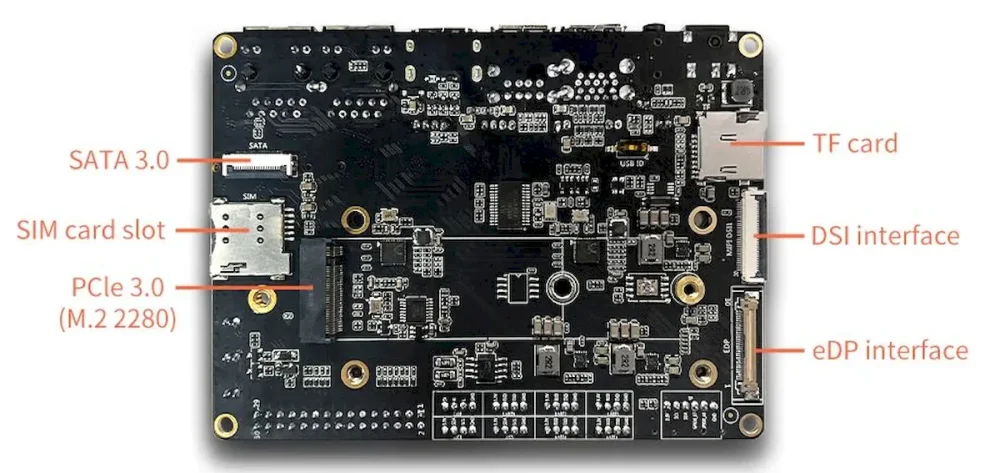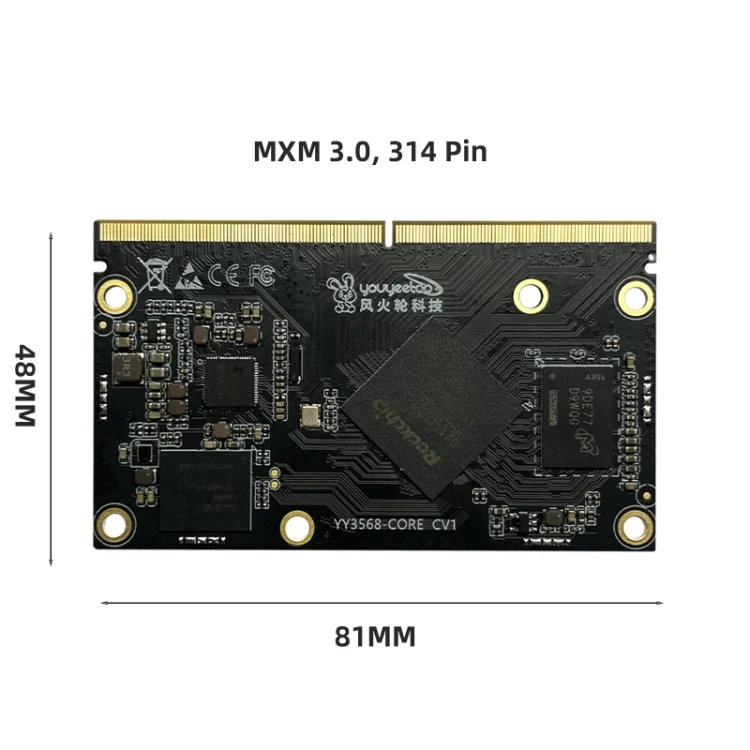Search the Community
Showing results for tags 'documentation'.
-
Here will be published all the tweaks for the Youyeetoo YY3568 board to enter the mainline with armbian. Images Kernel Vendor 6.1: https://github.com/armbian/linux-rockchip/commit/27a98750790114235c72e8420d45f44eff210461 Overlays: https://github.com/armbian/linux-rockchip/commit/18f066190842fc6bd509662a2d19588eb9f04612 Kernel Vendor 5.1: https://github.com/armbian/linux-rockchip/commit/b5964f997e2267802db0a965e66ec299b8a1f437
-
This meeting will be @ 11am EST All who want to contribute to the Newsletter are welcome.
-
I've downloaded the latest stable Release of the source code: https://github.com/armbian/build/releases/tag/v25.8.1 When doing a Build, when it allows you to select the kernel branch: [vendor, mainline, edge], the only edge available for selection is the bleeding edge (i.e. latest trunk version). I've downloaded the 25.8.1 source code, and that's the edge version I want to compile. How do you build an image with the latest (relatively) stable edge kernel, as available in Armbian-Config? (i.e. currently v6.16.1-edge at Armbian 25.8.1)? Update #1 When compiling the image with the edge kernel, it downloaded it from the internet and it took roughly an hour to build. When compiling an otherwise identical image with the Vendor kernel, it did not seem to download it from the internet (although I wasn't watching it closely), and it took roughly less than half the time to build the image. The reason I compiled an image with the Vendor kernel is because something broke in the last 24 hours on the internet-supplied edge kernel. It compiled 24 hours ago, a few hours ago it didn't. This wouldn't be an issue if it was compiling the most recent release of v6.16.1-edge (25.8.1), as per my intention, instead of the ultra-latest. I also made some discoveries about version number inconsistencies (independent of the kernel branch selected). Things are confused. In Release 25.8.1, the version is 25.11.0.trunk. In Release 25.5.1, the version is 25.08.0-trunk.
-
This meeting is open to anyone currently contributing or interested in helping shape the newsletter going forward. Discussion Topics Strengthening the newsletter process and its impact Expanding our contributor base (authors, vendors, community voices) Improving the flow of raw content from developers Gathering better feedback from readers Ensuring the publishing process runs smoothly We're especially looking for: Fresh ideas to make the newsletter more useful and engaging A volunteer to take on reviewing and approving the first draft before publication 📅 Meeting Details Location: Discord –> Armbian Server -> Lounge Channel Duration: ~45 minutes Looking forward to seeing you there!
-
- Frequently asked question
- Other/unspec
-
(and 2 more)
Tagged with:
-
This meeting is open to anyone currently contributing or interested in helping shape the newsletter going forward. Discussion Topics Strengthening the newsletter process and its impact Expanding our contributor base (authors, vendors, community voices) Improving the flow of raw content from developers Gathering better feedback from readers Ensuring the publishing process runs smoothly We're especially looking for: Fresh ideas to make the newsletter more useful and engaging A volunteer to take on reviewing and approving the first draft before publication 📅 Meeting Details Location: Discord –> Armbian Server -> Lounge Channel Duration: ~45 minutes Looking forward to seeing you there!
- 3 comments
-
1
-
- Frequently asked question
- Other/unspec
-
(and 2 more)
Tagged with:
-
Hello, My spare R4S is currently running the Rolling releases with Armbian Linux v6.12 Trixie image It seems /etc/resolved.conf got filled by at least /etc/systemd/resolved.conf [ global ] /etc/netplan/armbian.yaml [ per link/ ethernets: ] However I miss from which script the IPv6 nameservers are gathered and added as currently /etc/resolv.conf shows something like this and Iike to have just the ones from [ global ]: ( Please note I removed nameservers from the yaml file already ) # operation for /etc/resolv.conf. nameserver 127.0.0.1 nameserver ::1 nameserver fda8:5894:4e78:0:xxxx:xxxx:xxxx:xxxx # Too many DNS servers configured, the following entries may be ignored. nameserver 2001:1c00:2a02:ba00:xxxx:xxxx:xxxx:xxxx nameserver fda8:5894:4e78:0:xxxx:xxxx:xxxx:xxxx nameserver 2001:1c00:2a02:ba00:xxxx:xxxx:xxxx:xxxx search . Aiming for just the localhost nameservers in resolv.conf as unbound and pihole ( +wireguard ) will be running on the SBC only ... Hoping one can guide me as I could not find it from the Networking - Armbian Documentation TiA!
-
The page at https://docs.armbian.com/Process_Release-Model/ has a link entitled "Release Testing", but the link doesn't seem to go anywhere. Is there a document on the release testing process?
-
I would like to change the image types at https://www.armbian.com/mks-klipad50/ so that Debian Server images ("full-cli-stable-debian") for current and edge kernels are built for this board. Optimal would be, if the "Desktop" and "Minimal/IOT" were omitted, so that only the Server images appear. Something similar is done for "aml-s9xx-box" here: https://github.com/armbian/os/blob/main/userpatches/targets-release-community-maintained.template#L57 So my approach for enabling Server images would be https://github.com/armbian/os/compare/main...torte71:armbian-os:main as PR. But I am not sure a) if adding boards directly to the "items:" property is intended at all (or if it is e.g. just an unwanted workaround) b) if my changes work at all: I don't see a way to test it first c) how to disable generation of Desktop and Minimal/IOT images (but that point is optional, esp. if the changes would become too big) Could someone please give me some tipps for that?
-
The "Edit Device" wordpress template ("https://www.armbian.com/wp-admin/...") has some input fields that I would like to understand. I am trying to complete it for the MKS-Klipad50 (https://www.armbian.com/mks-klipad50). (It's a CSC board, not standard support - if that matters.) Following fields are unclear to me: "Compatible" What is the meaning and expected syntax? Is that something like devices using the same kernel, but different setup/devicetree files? "Expose kernels" / "How many kernels to expose?" Is this related to the "Kernels" table (see below), like how many rows to use? "Kernels" Is it required adding rows to have images automatically generated and appear as download links on the device page? Or are these options just required for additional non-standard images? Is it better to leave it empty? Could someone please shed some light on the meaning of these fields?
-
Happy new year everyone, So I really do not like the stub-resolver in Debian/Armbian , and I do not like forwarding any DNS request to any 3rd party in general. After some searching I found this: https://www.turek.dev/posts/disable-systemd-resolved-cleanly/ . Since we are on Armbian we need also remove the 00-armbian-default-dns.conf which points to cloudflare's 1.0.0.1 . 1. We probably do not need this, but just in case someone does not have it. sudo mkdir -p /etc/systemd/resolved.conf.d/ 2. We set the DNS Stub Listener to no and remove the comment from the line if applicable: sudo sed -i '/DNSStubListener=/s/^#//;s/=.*/=no/' /etc/systemd/resolved.conf 3. We create the needed symlinks, if applicable. sudo ln -sf /run/systemd/resolve/resolv.conf /etc/resolv.conf 4. We remove the CloudFlare default DNS sudo rm /etc/systemd/resolved.conf.d/00-armbian-default-dns.conf 5. Then we restart the service: sudo systemctl restart systemd-resolved Now I get my router IP as DNS resolver, which is what I like: $ cat /etc/resolv.conf # This is /run/systemd/resolve/resolv.conf managed by man:systemd-resolved(8). # Do not edit. # # This file might be symlinked as /etc/resolv.conf. If you're looking at # /etc/resolv.conf and seeing this text, you have followed the symlink. # # This is a dynamic resolv.conf file for connecting local clients directly to # all known uplink DNS servers. This file lists all configured search domains. # # Third party programs should typically not access this file directly, but only # through the symlink at /etc/resolv.conf. To manage man:resolv.conf(5) in a # different way, replace this symlink by a static file or a different symlink. # # See man:systemd-resolved.service(8) for details about the supported modes of # operation for /etc/resolv.conf. nameserver 192.168.1.1 search lan $
-
- Frequently asked question
- NanoPi R6S
-
(and 3 more)
Tagged with:
-
I downloaded and installed the Ubuntu noble image. Was this the correct one for my Raspberry Pi400 if I wanted the rolling release version? Thanks
-
untilDidier J. will be leading this meeting and sharing progress on the documentation tasks. Anyone interested in the documentation process and content can join this meeting!
-
How to I generate `.img` files? When I run `.compile` I end up with `.deb` files. I've been looking through the scripts but there are so many of them and I want to get to how to do this without having to use commands like: find . -name '*.sh' -print0 | xargs -0 grep compile_uboot | less for a long time. Thank you
-
hi I've been using the flag compile.sh PREFER_DOCKER=no while building in a systemd-nspawn container: Building Armbian using Ubuntu (jammy) in a systemd-nspawn container This time I managed to make a complete successful build with my work arounds for loop devices in systemd nspawn. However, the flag PREFER_DOCKER=no Didn't seem to be documented in the build options https://docs.armbian.com/Developer-Guide_Build-Options/ can the documentation be updated to add PREFER_DOCKER=no flag (at least under 'advanced users') ? note that it isn't possible to run docker normally within systemd-nspawn or that it'd require all those workarounds such as patching and using the host docker server which defeats the purpose of using docker. rather systemd-nspawn is the container to at least decouple the build environment from the host os environment (which can be a different linux distribution, I'm doing so from OpenSuse https://www.opensuse.org/), with the unfortunate caveat that loop devices still requires a workaround.









